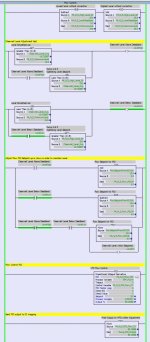drbitboy
Lifetime Supporting Member
I also have a P-only control (P = 20) providing a value from -10 to +10 that gets added to the first PID output. That value then drives the pump VFD. This works to a point but does not go far enough.
That is to be expected as it is the nature of a P-only controller: if the load (external conditions) changes, then the controller responds when that disturbance effects a change in PV (i.e. Error). That will reduce Error, but P-only cannot drive PV all the way back to SP, i.e. P-only cannot eliminate Error, until the load returns to the original state.
It's good to go back and re-read the OP.





